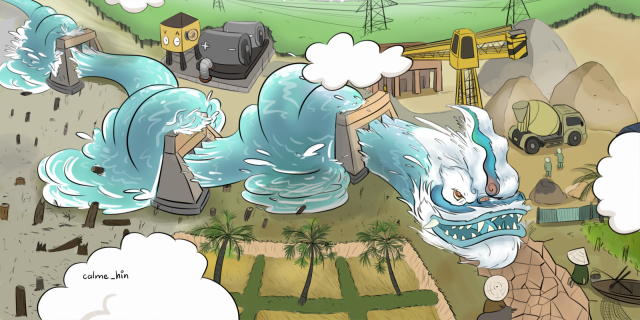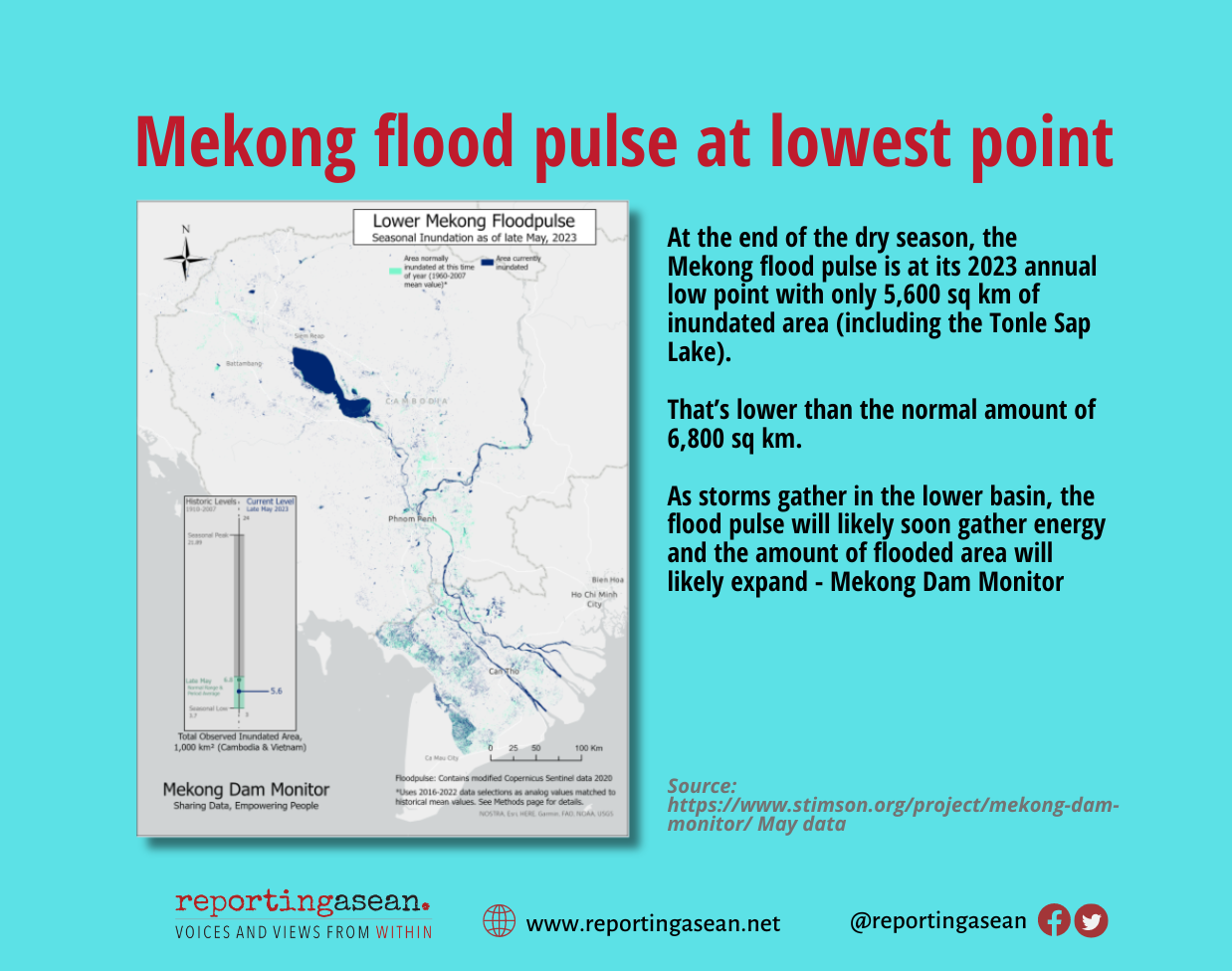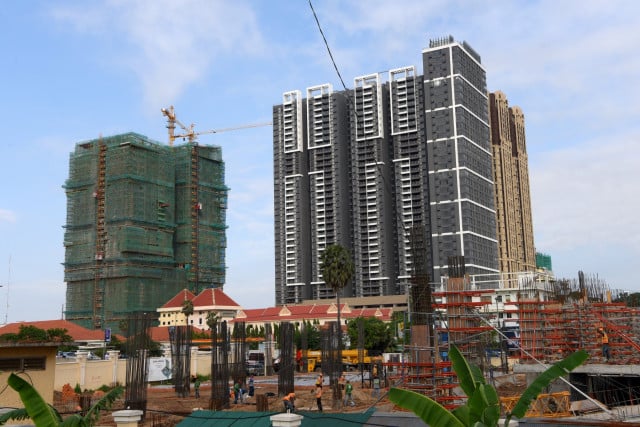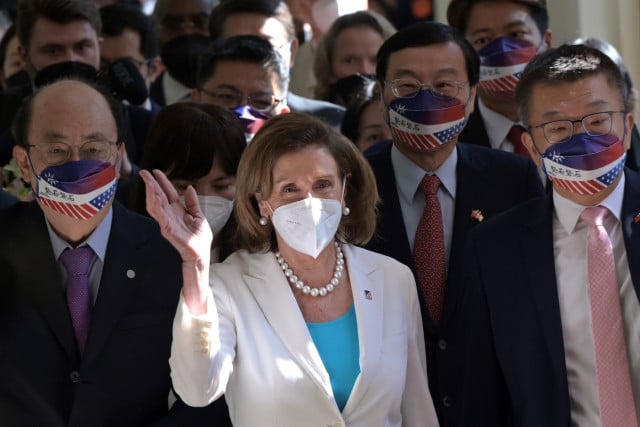The Mekong Region: ‘China’s Dams Can be Operated in a More Sensible Manner’

- By Johanna Son / Reporting ASEAN
- June 23, 2023 10:38 AM
The worries and woes about the impacts of China’s dams along the Mekong River have been simmering since their construction more than two decades ago.
But there is one big difference today: Beyond theories and perceptions, recorded data now describes - and confirms - that the way these dams are being operated is upsetting the river system’s natural balance and undercutting its indispensable, life-sustaining rhythms such as the Mekong flood pulse. This is the dam story that emerges from the Mekong Dam Monitor online platform, which since December 2020 has been providing near-real time data on river flows throughout the basin. It offers insights into the changes that dam operations, as forms of human intervention, have caused to the Mekong’s natural flow over time. “What these restrictions and releases (by China’s dams) do is they flatten the curve, they erase the pulse, and the wet season peak or the high pulse, which is what drives the expansion of the Tonle Sap,”said Brian Eyler, who is co-lead of the Mekong Dam Monitor and director of the Southeast Asia programme of the US-based Stimson Centre, which runs the platform.
“It’s what makes the Tonle Sap lake the world's largest inland fishery for a single body of water. It’s what drives water being cast out across Vietnam's Mekong Delta that then produces an incredible amount of agriculture,” he continued. “When that is lower than normal, the benefits of that flood pulse do not accrue.” He says that China’s dam operations can be adjusted in a way that respects the river system’s natural flood pulse, the value of Tonle Sap’s fishery to the food security of Cambodia and the region. “If the Tonle Sap is doing well, then the rest of the Mekong is doing well,” he said.
Below are excerpts from Reporting ASEAN editor-founder Johanna Son’s conversation with Stimson Centre’s Brian Eyler:
Reporting Asean’s Johanna Son: How does the Mekong Dam Monitor tell the story of how dams are changing the region?
Brian Eyler: The Mekong Dam Monitor provides a snapshot of where the water is, currently. We're able to examine why the river is the way it is. So is the river low now because of the way dams are operating? Or is it low now because of drought, or the combination of the two, and how much is dams and then we would assume the rest is related to drought or flood? So the monitor is for anyone really to gain insight into the impacts of the dams. The same can be said for dam impacts on, say, the famous flood pulse across the wetlands and the floodplain of the Mekong in Cambodia and Vietnam. From 2018 to 2021, the Tonle Sap Lake really did not expand.
We can't do it (study) as well as we can with the mainstream river analysis, but to a degree we were able to pinpoint why, what part of the expansion not happening, was from dams or what is from drought. This is important, because tens of millions of people rely on the seasonal ups and downs of the river for their livelihood, whether it's for fisheries or agricultural production, or some part of their cultural identity.
Johanna: How do you know that the change in the flood pulse is due to the dams and not other factors?
Brian: We've ruled out other factors. And we have models that compare actual information about the river – river levels, river gauge readings – that incorporate everything that nature and humans are doing to the river.
It's a combination of all the things that could happen upstream. We compare that to a natural flow model, and it's particularly accurate in the Golden Triangle, which imagines how the river would flow with if humans were doing nothing to it – and the difference is what humans have done. We've ruled out essentially that there are no other aspects of human intervention than dams, particularly (at) that Golden Triangle gauge, where we can gain the most insight for China's upstream dam impacts.
Johanna: In the early 2000s, when there were lots of Mekong conferences, a common narrative we heard is downstream countries should be grateful, because if they need water, it can be released from the Chinese dams. But it's not that simple, is it?
Brian: Right, that's a false narrative. And it's a narrative that that China, particularly, has not changed, despite a huge amount of evidence that something like dry-season water releases are not good for the natural resource base and the people of the Mekong. The dry-season water releases raise the level of the river during the dry season and essentially put more water in it. So again, the Chinese discourse is that well, you get more water.
The problem with that is it's a reflection of water being taken out during the wet season. So there's a symmetrical relationship between the amount of water that is held in reservoirs during the wet season, and then released during the dry season. And then that cycle repeats - more water held on the next wet season and released during the dry season. Dry-season releases produce hydropower. That's an important benefit that people in the Mekong or importantly, people outside of the Mekong benefit from, because the power goes to Guangzhou in China or to Bangkok, which aren't in the Mekong. What these restrictions and releases do is they flatten the curve, they erase the pulse, and the wet season peak or the high pulse, which is what drives the expansion of the Tonle Sap. It's what makes the Tonle Sap lake the world's largest inland fishery for a single body of water. It’s what drives water being cast out across Vietnam's Mekong Delta that then produces an incredible amount of agriculture. When that is lower than normal, the benefits of that flood pulse do not accrue.
Also, importantly, the amount of water that is let out during the dry season can double, or even triple, the amount of water that should be in the river. But that's not enough to make the river flood in the downstream, so the water essentially goes right into the ocean. It's not used by the people in a way that benefits them. A final point is that the higher river levels during the dry season do not allow important features of the Mekong ecosystem to regenerate when they should be dry.
For example, there are forests in the river that are called flooded forests in Cambodia – we're talking about tens, scores of kilometres of the river, covered by these forests. They're important habitats for fish and for animals and birds. The dolphin population is related to the health of that forest, and the trees of this forest are dying very rapidly because they're just inundated all year long. They don't have a chance to regenerate and grow.

Johanna: So these changes are basically disrupting the Mekong's natural balance.
Brian: Right, and it's most evident in places like the Golden Triangle – essentially from Vientiane upstream it's the most evident – that you can see it with your own eyes. It gets a little harder to see with your own eyes from Vientiane down, and that's where the data is important to provide evidence to show the changes.
Johanna: Can you tell us more about these changes are that one can see? I read that Thailand is the most affected because it's the closest one to China.
Brian: For China's dams impact – and we focus on China's dam impacts not because we have, you know, the anti-China agenda – we focus on China's dam impacts because the dams are huge. They're two of the largest dams of the world there, and they wield tremendous power over the outcomes of the downstream, and the outcomes are more pronounced the closer one is to those dams. For Southeast Asia, that would be the Golden Triangle, where Thailand, Laos, Myanmar meet.
During the wet season, those dams can reduce natural flow by 60 to 70 percent over the course of six months – and six months' stock of water, 60 to 70% reduction, is huge. Then during the dry season, they can triple or quadruple the amount of water that should be in the river at any one month. These are the things you can see with your eyes. If you know that, like for a period right now, the end of April, the river should be low. But yet you're looking at it and it's high – and that's not natural, obviously since it hasn't rained, right? There's no rain happening but the river's high. So that's from dam releases.
Johanna: One can see the river levels can change quickly?
Brian: The other thing you can see if you're in Chiang Saen (in northern Thailand) is you go to bed and the river's low, and you wake up and the river's high. Those are sudden changes that the dams bring about, and those are easy to see. And unfortunately, sometimes the changes are so drastic that they cause flooding.
What we're doing with our early warning is providing two to five days' lead time for local people to prepare for that incoming impact, because we can see when the (China) dams released water. We report to local communities and the Thai government and the Lao government when the amount of water exceeds a half a metre.
Johanna: It's now been many years after the construction of the biggest dams in in China, has there been a change in terms of notification from it? And how about other countries?
Brian: Since we started (in December 2020), and even before, China was pledging more data sharing. Since we've started this, the pledges have increased. Behaviour hasn't increased too much.
For us, the meaningful threshold of change is 50 centimetres. When the river changes 50 centimetres, it can inundate a garden along the river. If it's a metre, it can pull your boat into the river and take it away if you didn't tie it to a tree. If it's 1.5 metres, then you're talking about some flooding in someone's home. And China has passed all of those thresholds with its releases, and it doesn't issue early warnings like it's promised. So that's why we need to do what we're doing.

Johanna: How do your notifications reach local communities?
Brian: The communities receive information through local networks. And that, again, is done first through text message, and then the text messages are passed on an informal manner. There's no formal government process that issues all of our early warnings. But in Thailand, social media, Facebook, is actually the way that most of the community people receive the early warnings, and tens of thousands of people see that every time we issue an early warning.When the threshold reaches one metre or more, the Thai disaster risk authorities issue an alert to their provincial counterparts, who then issue an alert to the local counterparts.
Johanna: The sentiment during China’s dam construction was that being upstream, it controls the levers and downstream countries just have to live with it. In this sense, the information from the monitor provides other countries and communities some degree of agency?
Brian: Every time the Thai government issues the alerts to (the) provincial level, they also send a diplomatic letter to China saying ‘you should issue an alert’. So that's agency. . . .We see plenty of ways, actual actionable ways, that China's dams can be operated in a more sensible manner for the downstream that would still allow China to produce as much hydropower as they would like. And it's a matter of timing.
Johanna: What are some of these ways?
Brian: The Tonle Sap is a good symbol for the health of the Mekong. The Mekong River Commission calls it the bellweather – if the Tonle Sap is doing well, then the rest of the Mekong is doing well. The Tonle Sap expansion typically begins to kick off in June and in July, and really takes off in August. So it's the early months of the wet season, where the kind of ignition of the expansion happens. That's also the time when China's big dams start to take the water out. They actually take a lot out first, and then they slow down as the wet season goes on. So there's a kind of a conflict there, where water is needed downstream to ignite the flood pulse and expansion of the lake, at a time when China is taking the most water out. So if there's a situation where it's known and forecasted, that the later months of the wet season are going to be very wet – well, it's possible for those big dams to wait to first allow flow to move through the dams and give the Tonle Sap the kind of ignition that it needs. And then when the rains are coming in August, September, and in October, that's when the reservoirs can fill. Now what the data shows is that by the time September and October, come, the large dams are all mostly already filled. And that means lots of water running through them, and it's coming down to the downstream. But the Mekong would be healthier if it had water earlier in the wet season.
Johanna: That's like saying - to remember that the river isn't just about the part that passes through your country, and to be respectful of the patterns of the flood pulse.
Brian: Right, exactly. It would be great if there were stakeholders and actors in China who would respect that flood pulse, and speak to the power of the Tonle Sap and the importance of the Tonle Sap fishery to the food security of say, the people in Cambodia. These are all true facts.But the discourse from China, again, is like 'our dams help with reducing your floods and they improve drought conditions during the dry season'. That's just not helpful, not just from an ecosystem perspective, but from an economic security perspective, it's not helpful for the downstream.
Johanna: During the discussion about Chinese dams in the early 2000s, we didn't have lived experience about extreme weather events, such as this extreme summer heat. When you look at this same Mekong dam story against the backdrop of the impact of climate change, what do you see?
Brian: Well, the wet season is compressing. The ends, the sides, the tails of the wet season are getting shorter. The wet season itself is getting shorter. So that's the time when the dams would be filling up for their later hydropower production. In 2015 to 2021, the wet seasons had a lot less water, a lot less rain than normal. And whether that was due to climate change, or just a climate effect – normally you can't have these periods of drought during the wet season – has yet to be determined. But those dams throughout the Mekong, some of them filled up. In 2020, the Chinese dams filled up close to normal, and 2020 was the worst year on record for drought during the wet season.So when those dams filled up normally, (they) took a proportionately higher amount of water out of the river system. So that's an effect of climate change and dams making things worse for people downstream. The big drivers – climate change, dams – exacerbate the situation.
Johanna:How does climate change complicate the hydropower equation?
Brian: There are more intense storms happening. They're happening over Isaan, they're happening over the Tonle Sap and this is causing tremendous flooding, flooding that really hadn't been seen in decades. That happened last year in August and September, in Isaan (the Thai northeast). The dams really don't have a role to play because they’re not going to be able to absorb the shocks of those floods, to the extent that matters. In fact, they introduce a lot of uncertainty. So what we watch is times when a reservoir might be very close to high or high level, and a massive storm comes in and that reservoir has to release the tremendous amount of water out, just so it does not fail, that there's not a dam safety issue. And that causes flash flooding downstream on communities that otherwise wouldn't have flash flooding. That's one new phenomenon that we're seeing. It's happening in every country of the Mekong.
Johanna: It looks like the management of hydropower is also changing because of weather events that we are not used to don’t know so well, so it’s become more unpredictable.
Brian: Extreme weather makes it harder to manage reservoirs. (In) extreme droughts, you don't get as much power as you normally would, out of a dam, and therefore, they're less economically productive. Then the storms that can just kind of surprise a dam operator can introduce a lot of risks. So, climate change is filled with uncertainty. It introduces much more uncertainty into decision-making processes. I imagine, over time, dam operators will be able to cope and adapt to that uncertainty. But the goalposts are moving, you've got a moving baseline where each year has been getting worse and worse.

Reporting Asean















